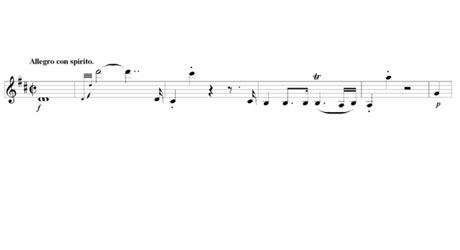Mozart wrote this work in 1782 for the ceremonies surrounding the ennoblement of Sigmund Haffner, a member of a prominent Salzburg family. He originally wrote this piece as a six-movement serenade, including an introductory march and two minuets. He wrote it in just a few short weeks in the summer, and there is no record of a performance at that time. However, in December 1782 Mozart decided he wanted to perform it in Vienna in a concert and asked his father for the score.
When he received the score, Mozart was astonished at how good it was, because he had forgotten every note of it! He promptly went about revising the piece for his upcoming performance. He dropped the introductory march and one minuet and organized it into the familiar four-movement symphony we know today. A few years later he added flutes and clarinets to the outer movements.
The symphony’s outer movements are full of brilliant passagework, flair, and dash. Mozart specified that the first movement was to be played “with great fire.” It opens with a famous octave leap upwards, and then downwards, with embellishments — a theme which is repeated throughout. The second movement is a simple (yet subtle) andante, with a relaxed atmosphere. It first features a lyrical violin melody accompanied by a wind chorale; the contrasting second theme is introduced by the 2nd violins and violas. The third movement is a foursquare minuet, with a lyrical counterpoint in the trio. The final presto (according to Mozart, “as fast as possible”) opens with witty understatement, spins out an intimate second theme, and ends with a magnificent triumphal flourish.
— M.F. Tietz
Symphony No. 35 in D Major
K. 385, "Haffner"
Composed in 1782
By Wolfgang Amadeus Mozart






